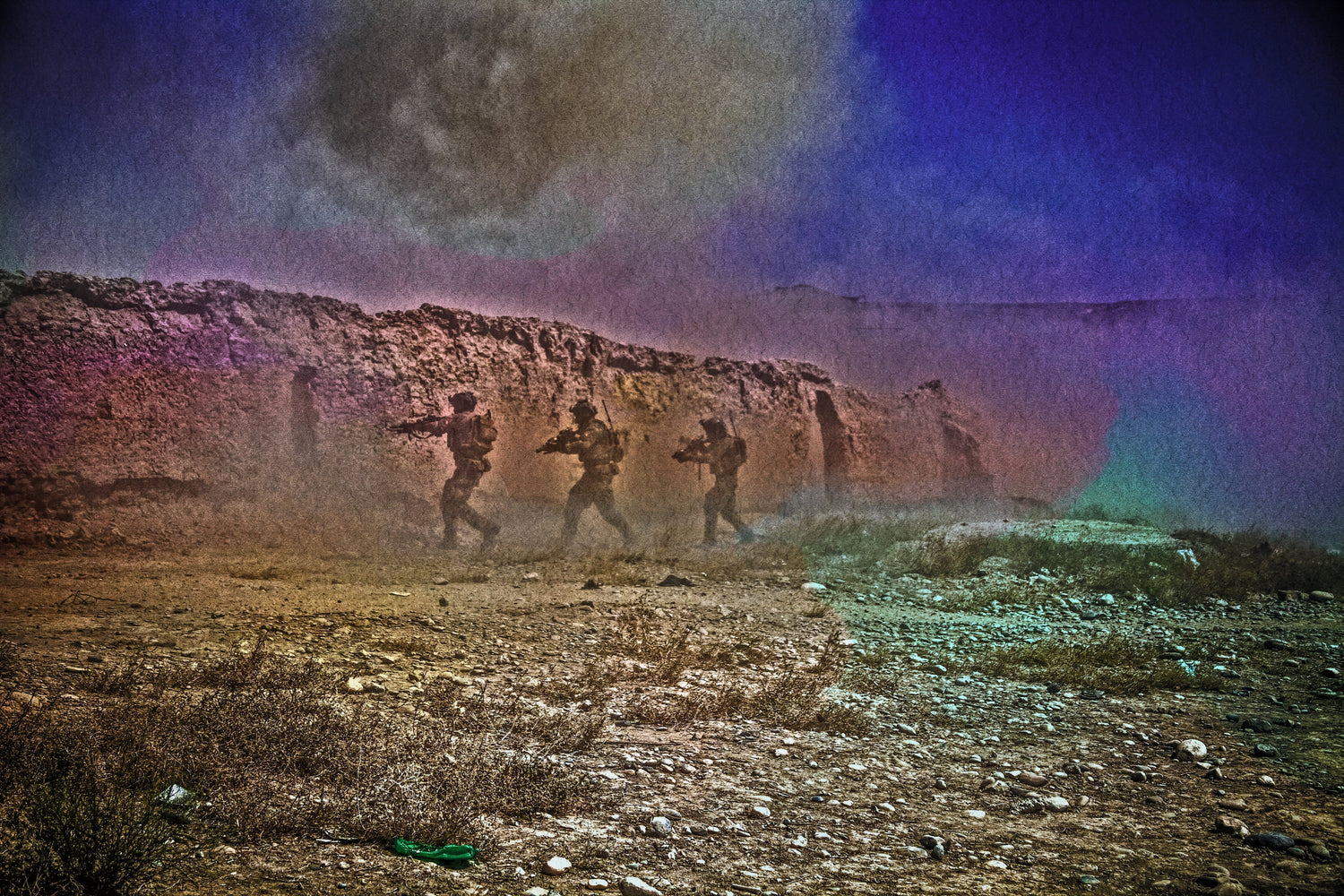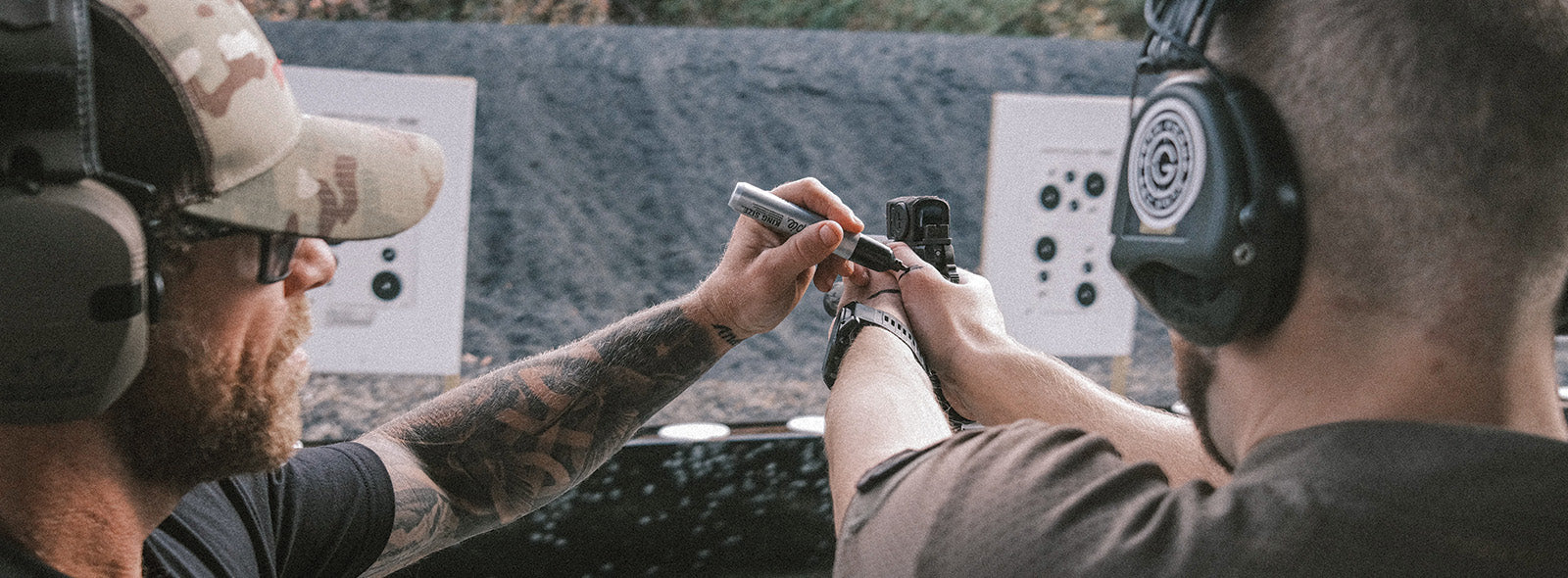Unleashing the Power of Violence of Action: A Key Concept in Self-Defense
When it comes to self-defense, "violence of action" is a principle that can make all the difference. While it may sound intimidating, it’s a critical concept for anyone serious about personal safety. In this blog, we'll explore what violence of action means, its role in self-defense, and why mastering this approach could save your life.
What is Violence of Action?
Violence of action refers to a sudden, decisive, and overwhelming response to a threat. Simply put, it is using the maximum force needed immediately and without hesitation to elicit the response you desire from the threat. In self-defense, it means using controlled aggression to neutralize an assailant quickly and effectively. This concept is rooted in the idea that an immediate and powerful reaction can disrupt an attacker’s plan, giving you the upper hand. It’s not about being violent for the sake of violence but about taking decisive action to protect yourself or others.
The Importance of Violence of Action in Self-Defense
Overcoming the Freeze Response: During a high-stress encounter, the body's natural fight-or-flight response can cause a freeze reaction. By training in violence of action, you condition yourself to respond aggressively and decisively, breaking the paralysis that fear can induce.
Gaining Control: A sudden, powerful counterattack can surprise and overwhelm an assailant, giving you control of the situation. This can create a window of opportunity to escape or subdue the threat.
Psychological Impact: The psychological effect of a forceful counterattack can demoralize an aggressor. The unexpected intensity can make them question their initial decision to attack, potentially leading to their retreat.
Ending the Threat Quickly: The primary goal of violence of action is to end the confrontation as swiftly as possible, reducing the risk of injury to yourself and others.
How to Implement Violence of Action in Self-Defense Training
Mental Conditioning: Understanding and accepting the need to use violence of action is the first step. This requires mental conditioning to ensure you can switch to a combat mindset when necessary.
Situational Awareness: Recognizing potential threats before they become immediate dangers allows you to mentally prepare for action.
Training in Techniques: Learn and practice self-defense techniques that can be executed with force and precision. This includes strikes, joint locks, and escapes designed to incapacitate an attacker quickly.
Scenario-Based Training: Engage in realistic self-defense scenarios that simulate high-stress situations. This type of training helps ingrain a violent response into muscle memory.
Training Tools: Using Self-Defense Shooting Targets
A key component of training for violence of action, especially for those practicing concealed carry or preparing for real-world threats, is the use of self-defense shooting targets. These targets simulate human aggressors and high-stress situations, helping individuals develop speed, accuracy, and decision-making under pressure.
Whether you're training at a range or in a controlled simulation environment, self-defense shooting targets can:
-
Help condition rapid response to specific threats.
-
Improve shot placement for neutralizing vital zones.
-
Reinforce judgment in shoot/no-shoot scenarios.
Incorporating these tools into your routine builds confidence and reinforces the principles of violence of action—speed, efficiency, and psychological dominance—while staying within legal and ethical bounds.
Training with Hostage Situation Targets for Precision Under Pressure
One of the most critical aspects of violence of action, especially in situations where innocent lives are at stake, is precision. In scenarios like active threats or home invasions, where someone may be held against their will, your ability to respond effectively hinges on targeting the aggressor without endangering the hostage. That’s where hostage situation targets come into play.
Hostage situation targets are specialized training tools used in firearms and defensive tactics training. They simulate real-world scenarios where an attacker is physically close to or holding a hostage. These targets force the trainee to make fast, accurate decisions and develop the skills to neutralize the threat with minimal risk to the innocent party.
Why Train with Hostage Situation Targets?
-
Improved Target Discrimination: These drills help develop the ability to quickly identify the threat and distinguish it from a potential victim, an essential skill under stress.
-
Enhanced Precision: Practicing with tight shot placement on partial or moving targets teaches fine motor control and accuracy under pressure.
-
Stress Inoculation: By recreating the psychological intensity of real hostage scenarios, these targets help prepare your mind to stay calm and decisive when it matters most.
Integrating into Violence of Action
Violence of action isn’t just about overwhelming force—it’s about using that force responsibly and effectively. Training with hostage situation targets teaches you to channel aggression into controlled action, ensuring your response is not just powerful, but also surgically precise. This kind of training bridges the gap between brute strength and tactical discipline, which is especially vital for those who carry concealed or train for home defense.
In short, hostage situation targets are a powerful way to practice using violence of action with pinpoint accuracy, empowering you to defend yourself or others without causing unintended harm.
Torso Shooting Targets: Training for Real-World Accuracy
In firearms-based self-defense training, torso shooting targets are essential for developing the speed, accuracy, and control demanded by real-life encounters. When employing violence of action, your goal is to stop the threat quickly—and the torso presents the most effective target zone for doing so.
Why the torso? It’s the largest area on the human body and houses vital organs such as the heart, lungs, and major blood vessels. In a life-threatening situation, aiming for center mass gives you the highest chance of stopping the attacker with minimal shots, especially under stress.
The Value of Torso Shooting Targets
-
Vital Zone Focus: Torso targets are designed to help you consistently hit center mass, reinforcing the habit of aiming for the most effective stopping point.
-
Stress Training: When used in drills that incorporate movement, time limits, or simulated high-stress environments, these targets build the muscle memory to act under pressure.
-
Shot Placement Awareness: Many torso targets include marked scoring zones or vital organ outlines, helping shooters refine shot placement for maximum effectiveness.
-
Scalability: From paper silhouettes to reactive 3D torsos, these targets can match any skill level—from beginner to advanced tactical shooter.
Violence of Action Meets Precision
Training with torso shooting targets allows you to practice violence of action with firearms in a responsible and effective way. It conditions your brain and body to move decisively, draw your weapon confidently, and deliver accurate rounds under pressure. In a real defensive shooting, hesitation can cost you; torso target training helps ensure that when action is required, you’re ready to respond with speed and purpose.
Common Myths and Misconceptions
Violence of Action Equals Brutality: Many people mistakenly believe that violence of action means excessive brutality. In reality, it's about being efficient and effective, using the proper amount of force to end the threat.
It’s Only for the Strong: Effective violence of action doesn't require superior strength but rather speed, precision, and mindset. Anyone can benefit from training in this principle, regardless of physical size or strength.
It’s Not Legal: The use of violence in self-defense is governed by laws that vary by jurisdiction. Understanding the legal boundaries of self-defense in your area is crucial. Violence of action, when used appropriately, can still fall within legal self-defense.
Why Violence of Action is Crucial for Self-Defense
Self-defense is not about engaging in a fight; it's about survival. Violence of action is a tool that empowers you to defend yourself effectively when de-escalation is no longer an option. It shifts the balance of power, often turning the tables on a would-be threat.
Training in violence of action also builds confidence, reducing the likelihood of being targeted in the first place. An attacker is less likely to pick someone who appears prepared and capable of defending themselves.
Violence of Action in Professional and Civilian Contexts
While violence of action is a cornerstone of self-defense, its principles are also critical in police, military, and concealed carry scenarios, each adapting the concept to unique demands and constraints.
Police Operations:
Law enforcement relies on violence of action to manage high-risk situations, such as apprehending violent suspects or stopping active shooters. Officers use rapid, coordinated tactics—think SWAT teams breaching a building—to overwhelm threats before they escalate. The immediacy of action prevents suspects from gaining the upper hand, while a commanding presence can psychologically deter resistance. Training emphasizes scenario-based drills to balance decisive force with de-escalation, ensuring compliance with legal standards like proportionality. For police, violence of action is about protecting communities while minimizing harm, guided by strict policies.
Military Tactics:
In military contexts, violence of action drives operations like raids or ambushes, where speed, surprise, and overwhelming force neutralize enemies. Think of elite units clearing a hostile compound: they strike fast to prevent counterattacks, using shock to break enemy morale. Efficiency is key to achieving objectives while limiting collateral damage, and rigorous training prepares soldiers for chaotic environments. Unlike self-defense, military applications may prioritize mission success over personal safety, but Rules of Engagement ensure disciplined force. This approach maximizes battlefield dominance but requires precise execution.
Concealed Carry Self-Defense:
For civilians with concealed carry permits, violence of action is a last resort to survive lethal threats. If faced with an armed attacker, a carrier must act swiftly—drawing and engaging with precision—to stop the threat. A confident response can deter an assailant, but the force must be legally justified, varying by state laws (e.g., stand-your-ground or duty-to-retreat). Training, like force-on-force scenarios, builds the ability to act under stress while prioritizing efficiency to protect bystanders. For carriers, violence of action is about survival within tight legal and ethical bounds.
In all contexts, the principles of immediacy, overwhelming force, psychological dominance, and efficiency shine through, tailored to the situation. Whether you’re a civilian, officer, or soldier, training and mindset are key to wielding violence of action effectively and responsibly.
Conclusion
Violence of action is a cornerstone of effective self-defense. It emphasizes the importance of immediate, decisive action to stop a threat before it escalates. Through mental conditioning, situational awareness, and proper training, anyone can learn to harness this powerful principle. Remember, self-defense is not about seeking violence but being prepared to act decisively when necessary.
By understanding and applying the concept of violence of action, you equip yourself with a valuable skill set that could one day be the difference between life and death. Stay safe, stay aware, and be prepared to act with purpose.




Leave a comment
This site is protected by hCaptcha and the hCaptcha Privacy Policy and Terms of Service apply.